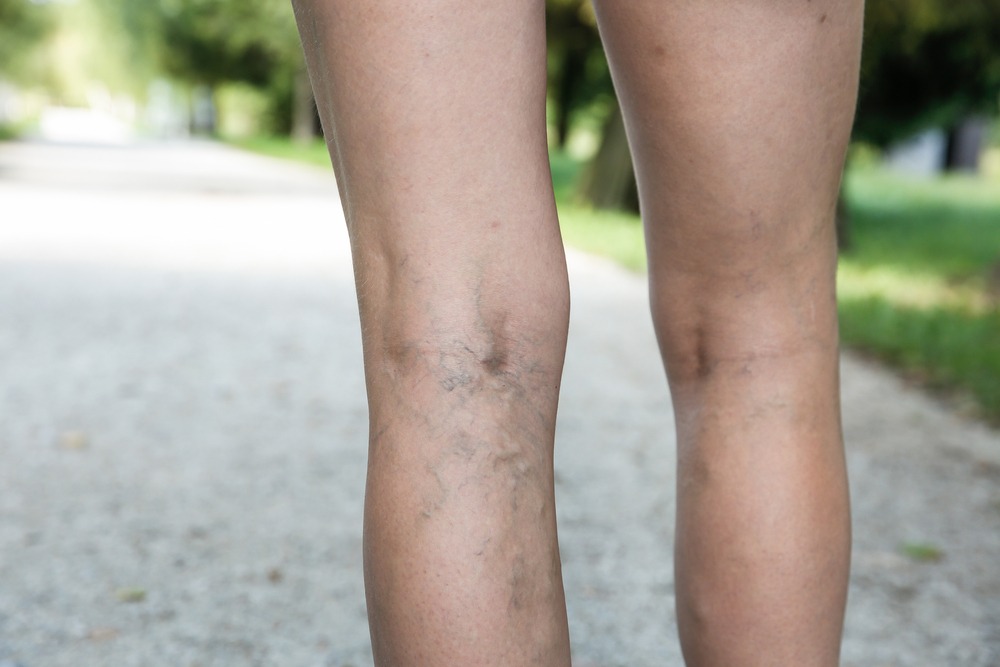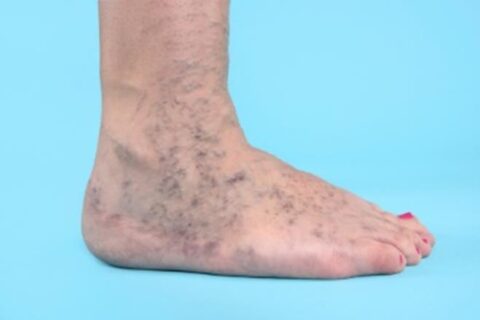How to Treat and Prevent Spider Veins

Spider veins are not a dangerous medical condition, but most people would prefer to get rid of them. These enlarged blue, red, or flesh-colored blood vessels live close to the surface of the skin where they are highly visible. Many people feel embarrassed by spider veins, the smaller relatives of varicose vein because they look like bulging cords under the skin. They often form web-like patterns on the legs and face, but can occur anywhere on the body.
Spider veins generally are not painful, but they can itch from time to time and may even ache or cause a heavy feeling in the legs. Mostly, they are a cosmetic issue that can impact self-esteem and make people self-conscious. Fortunately, spider veins can be treated when they occur. There are even things you can do to prevent them from becoming a problem in the first place.
What Causes Spider Veins?
Spider veins occur when structures called valves, which are found in our veins, become weak or damaged. Our hearts pump blood rapidly through our arteries, but the blood slows down quite a bit in our veins because there isn’t as much pressure (arteries have high pressure, veins have low pressure). To make up for this lack of pressure, muscles actually push against the vessels and squeeze blood back to the heart against the force of gravity. Because our muscles aren’t always active, there needs to be a mechanism to prevent the blood from flowing backward. Flaps of tissue from the vessel wall, called valves, prevent backward blood flow and thus prevent blood from collecting in our veins.
If the valves fail for any reason, blood builds up in our veins and causes them to stretch out (this is referred to as venous insufficiency). Over time, the veins respond to the added stress by developing thicker walls to resist the extra pressure. This causes them to become more prominent and leads to spider veins, varicose veins, and other problems.
Most people don’t notice spider veins until they are in their 50s. At that point, roughly half of people start to develop spider veins. Some people are more likely to develop problems with their veins however. Risk factors for developing spider veins include:
- Changes in hormones
- Excess weight
- Family history of spider veins
- Female gender
- Increasing age
- Lack of movement and exercise
- Pregnancy
- Sun exposure
Some of these risk factors can be controlled, but some cannot. To prevent spider veins from happening, you will want to minimize as many risk factors as possible. You may not be able to control your family history or gender, but you can get more exercise and reduce your sun exposure.
Preventing Spider Veins
The most important thing you can do to prevent spider veins and varicose veins from developing is to keep moving. You do not want to sit or stand for extended periods of time because the lack of muscle movements leads to pooling of blood in your veins, particularly the veins of your legs. Standing for long periods is especially problematic because gravity pulls the blood into your legs, putting even more stress on the valves. If you do have to stand for long periods of time, keep your feet moving. Laying down to sleep is fine because it takes the pressure off of your veins.
Another important thing you can do is elevate your legs when you are resting to help take some of the pressure off of your veins and the valves in them. Elevating your legs makes it easier for blood to return to your heart and prevents it from building up and stretching veins.
Do not cross your legs if you can help it. Crossing your legs for too long can obstruct blood flow and put more stress on the valves in your veins. This is especially important for people who have a family history of spider veins and varicose veins because they are at higher risk of having problems.
Good foot wear is also a must for preventing spider veins. Wear high-heels as little as possible because they make it harder for blood to flow properly and actually weaken calf muscles. Also, avoid clothing that is tight around the waist and groin area as it can diminish blood flow.
Even though sunlight is not a direct cause of spider veins, getting too much sun will age your skin and make spider veins more obvious. This is especially true of your face, so wear sunscreen or cover up to avoid sun exposure as much as possible.
Treating Spider Veins
Even though preventative measures can go a long way to reducing your risk of spider veins, not everyone can completely eliminate the problem. If you do have spider veins and want to get rid of them, there are several treatment options to consider.
Compression Stockings
Compression stockings help to reduce pressure on your veins and keep blood flowing in the right direction. There are three kinds you can get including: support pantyhose, over-the-counter compression stockings, and prescription compression stockings. The last of the three choices will need to be fitted by a professional, but all three can help to reduce blood accumulation in veins and shrink spider veins.
If you have mild spider veins, compression stockings worn on most days may be enough to reduce their appearance and meet your needs. Compression stockings work better as a preventative measure, however, so they may not be enough to treat moderate spider veins. There are few if any side effects with compression stockings.
Sclerotherapy
Sclerotherapy is a minimally invasive procedure and the most common means of treating both spider veins and varicose veins. During the procedure, a doctor will use a needle to inject a chemical into your vein that causes the walls of the vein to stick together and seal shut. The vein then becomes a scar that fades away over a few weeks.
Sclerotherapy can be done in a doctor’s office and requires no anesthesia or special precautions. You can usually return to your normal activity immediately after treatment. Usually, the same vein will need to be treated more than once, so you may have to return for injections every 4-6 weeks until you are happy with the results.
Sclerotherapy can cause red patches of skin where the needle was inserted as well as brown lines, spots, and groups of fine red blood vessels. These all usually go away a short time after treatment. On occasion, sclerotherapy may cause blood to get trapped in a vein and cause inflammation. This can be uncomfortable, but is not dangerous. Your doctor can drain the trapped blood to relieve the inflammation.
Laser Therapy
Laser therapy uses light to make small spider veins go away. It requires no needles or incision, but the heat from the laser can be very painful. Treatments usually last for twenty minutes and you will need to have anywhere from two to five treatments to remove spider veins from your legs.
Laser treatments can cause skin discoloration that lasts for up to two months as well as pain that goes away after a few days. It is only effective on smaller veins (less than 3 mm or 1/10th of an inch) and cannot be used on all skin types or colors.
Endovascular Therapy
Endovascular therapy is the newest form of treatment for spier veins and varicose veins. It works much like laser therapy, but does not cause the pain or surface discoloration because the heat is applied from inside the vein. Endovascular therapy requires just a needle-sized entry point in your skin. You are unlikely to feel much as a result of the procedure and you can generally return to normal activity within a few days. There are very few side effects to endovascular therapy. You may get a mild cramp for a few minutes during the procedure, but that is about it (https://cvvcenters.com/).
Surgery
The last approach to treating spider veins is surgery. There are several different techniques that can be used, but the basic premise is the same. After administering a local anesthetic (numbing agent), a surgeon will make a small incision over the vein and then use one of several specialized tools to remove the vein completely. This procedure can result in some bruising and temporary numbness, but is also highly successful and provides permanent results. Surgery is often used as a last resort for people who do not respond well to other approaches.
Choosing a Surgeon
The surgeon you choose to treat your spider veins is the biggest predictor of your outcome. You want to choose someone with a good reputation who uses the best technology available. Finding a board-certified vascular surgeon is a good start and be certain to look for a surgeon who offers a variety of techniques. Your surgeon should tailor treatment to meet your particular needs.


